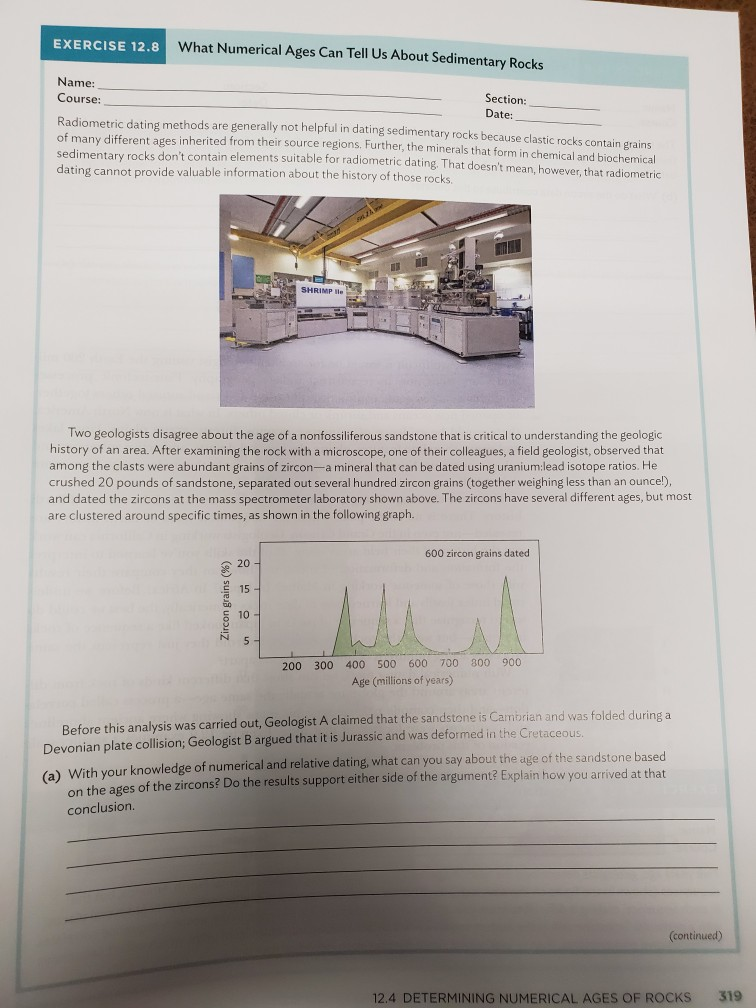However, they don’t reveal the relative ages of rocks preserved in two completely different areas. In this case, fossils could be helpful instruments for understanding the relative ages of rocks. Each fossil species displays a unique period of time in Earth’s history.
How does radiometric courting help in figuring out the ages of rocks?
By relationship these surrounding layers, they’ll figure out the youngest and oldest that the fossil might be; this is recognized as “bracketing” the age of the sedimentary layer during which the fossils happen. For a given pattern of rock, how is the courting procedure carried out? The mother or father and daughter isotopes are separated  out of the mineral utilizing chemical extraction. In the case of uranium, 238U and 235U isotopes are separated out together, as are the 206Pb and 207Pb with an instrument known as a mass spectrometer [9].
out of the mineral utilizing chemical extraction. In the case of uranium, 238U and 235U isotopes are separated out together, as are the 206Pb and 207Pb with an instrument known as a mass spectrometer [9].
That stuff has a half-life of 1.2 billion years so it is nicely suited to courting stuff over geological time spans. Some organisms survived for a very very lengthy time, and are not significantly helpful for relationship rocks. Sharks, for example, have been around for over 400 million years, and the great white shark has survived for sixteen million years, thus far.
Can rocks be carbon dated?
If the quantity of radiation to which an object is uncovered remains fixed, the quantity of electrons trapped in the imperfections in the crystal construction of the fabric will be proportional to the age of the fabric. These methods are relevant to materials which may be up to about one hundred,000 years outdated. However, as quickly as rocks or fossils become much older than that, all of the “traps” in the crystal structures turn out to be full and no more electrons can accumulate, even when they’re dislodged. Igneous rocks are one of the best types of rock samples to use for radiometric relationship. When igneous rock forms, elements are separated into different minerals in the rock. Thus, after they kind, minerals in igneous rocks usually comprise only a father or mother isotope and none of the daughter isotope.
When the magnetic north pole is close to the geographic north pole (as it is today), it’s referred to as regular polarity. Reversed polarity is when the magnetic “north” is near the geographic south pole. Combined observations of this kind have led to the event of the geomagnetic polarity time scale (GPTS) (Figure 6b). The GPTS is divided into periods of normal polarity and reversed polarity. Relative time allows scientists to inform the story of Earth events, however doesn’t provide specific numeric ages, and thus, the rate at which geologic processes operate.
Which kinds of rocks are finest for radiometric relationship which aren’t good?
Absolute courting, also known as numerical courting, makes use of methods that provide chronological estimates of the age of geological materials or fossils. I am certainly not an skilled within the many radiometric means of dating rock, but one of the techniques typically used (and the one I consider your teacher was speaking of) is potassium-argon dating. Rocks with potassium content material will include some primordial degree of radioactive K-40 at the time of their formation.
These break down over time in a process that scientists name “radioactive decay.” Each unique isotope, referred to as the parent, progressively decays to form a brand new isotope, referred to as the daughter. For example, unstable Carbon-14 (parent isotope) decays into nitrogen-14 (daughter isotope) after emitting a beta particle. Absolute relationship methods use a sort of ‘clock’ to discover out the date a rock or fossil was shaped. A number of radiometric courting strategies are commonly used for this. These are primarily based on the pure radioactive decay of sure elements, such as potassium and carbon.
Metamorphic processes tend to reset the clocks and smear the igneous rock’s authentic date. Detrital sedimentary rocks are less useful as a end result of they are made of minerals derived from multiple mother or father sources with probably many dates. However, scientists can use igneous occasions so far sedimentary sequences. Another example could be a 65 million-year-old volcanic dike that reduce throughout sedimentary strata.